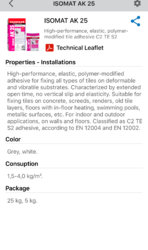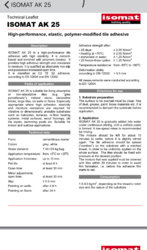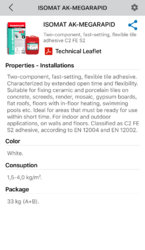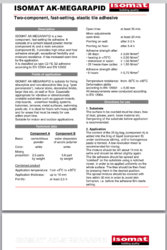A
Adam Heron
Hi guys!
I am doing my first ever bathroom project and am after some advice from you true professionals.
I intend to tile half of a sloped ceiling with 610x305 marble tiles. There will also be some tiling onto brick walls. I'm not sweating about the walls so much, just the ceiling! I have spoken to tile giant, topps tiles etc with very limited response, hence why I'm now here.
"No one has asked me that in 20 years mate, I'll have to speak to the manufacturer!"
Have seen some previous advice of hardiebacker screwed to the joists, tiles adhered individually and supported for 24 hours. Would greatly appreciate any thoughts and input on this guys. I'm obviously looking at spending some serious money on this marble, doing it correctly and hopefully looking like I've had one of you guys do the job for me!!
Yes... I'm ambitious!
In terms of best tile adhesives, top quality mould resistant grout etc, what are your views and opinions on this? I'm certainly not a tiler, but and engineer with an eye for detail. Want everything to be done to the best possible standards. I'm not just prepared to walk out of a store with materials that I have been told are the best and suitable for the job. Need advice from professionals who actually do it for a living!
Greatly appreciate any help and input on this guys...
Adam



I am doing my first ever bathroom project and am after some advice from you true professionals.
I intend to tile half of a sloped ceiling with 610x305 marble tiles. There will also be some tiling onto brick walls. I'm not sweating about the walls so much, just the ceiling! I have spoken to tile giant, topps tiles etc with very limited response, hence why I'm now here.
"No one has asked me that in 20 years mate, I'll have to speak to the manufacturer!"
Have seen some previous advice of hardiebacker screwed to the joists, tiles adhered individually and supported for 24 hours. Would greatly appreciate any thoughts and input on this guys. I'm obviously looking at spending some serious money on this marble, doing it correctly and hopefully looking like I've had one of you guys do the job for me!!
Yes... I'm ambitious!
In terms of best tile adhesives, top quality mould resistant grout etc, what are your views and opinions on this? I'm certainly not a tiler, but and engineer with an eye for detail. Want everything to be done to the best possible standards. I'm not just prepared to walk out of a store with materials that I have been told are the best and suitable for the job. Need advice from professionals who actually do it for a living!
Greatly appreciate any help and input on this guys...
Adam





